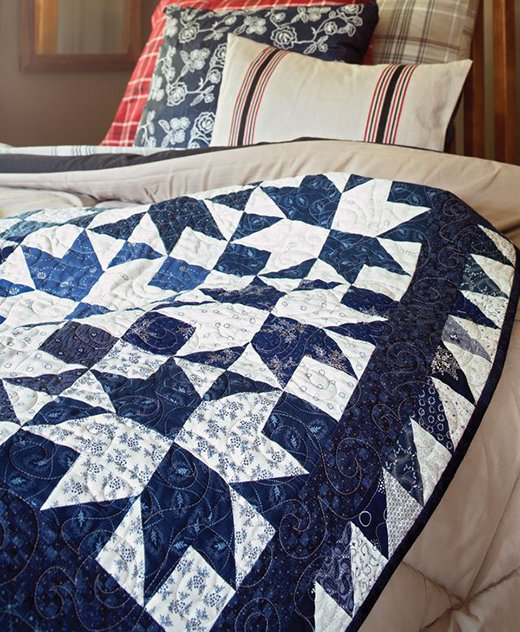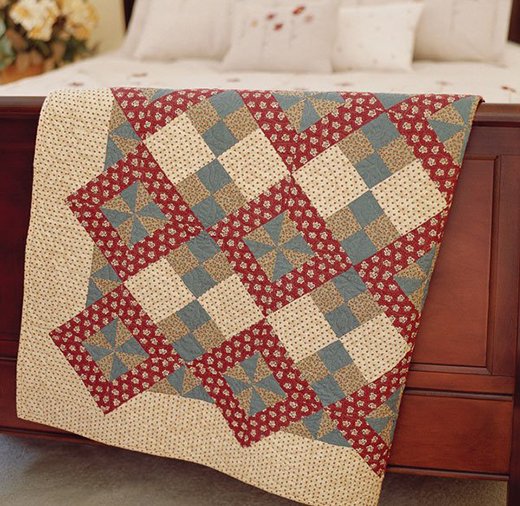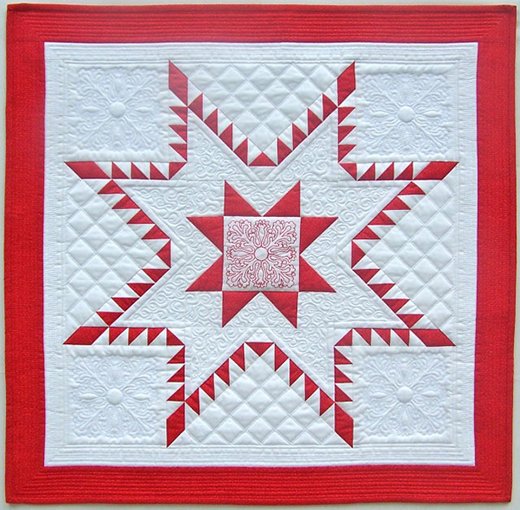There’s something undeniably enchanting about combining traditional quilting techniques with modern designs. The Pixelated Rose Quilt is a perfect example of this blend, transforming simple squares of fabric into a stunning floral masterpiece. This quilt, with its pixelated representation of a rose, captures the essence of contemporary quilting while maintaining the warmth and charm of a classic quilt.
The Pixelated Rose Quilt is designed for quilters who have a basic understanding of quilting techniques and terminology. Its structured approach, assembling the quilt in blocks, ensures that the process remains organized and manageable. Join me as we embark on this creative journey to craft a quilt that is as visually striking as it is heartfelt.
The Beauty of Pixelation in Quilting
Pixelation in quilting involves breaking down an image into small squares, much like pixels on a screen. This method allows for intricate designs that are surprisingly simple to construct. The Pixelated Rose Quilt uses this technique to create a detailed floral pattern, with each block contributing to the overall image. The result is a quilt that is both modern and timeless, making it a wonderful project for quilters looking to explore new design possibilities.
Materials and Preparation
Materials Needed
Fabric Requirements:
- 3/4 yard (70 cm) C120 Petal Pink
- 1/2 yard (50 cm) C120 Peony
- 3/8 yard (35 cm) C120 Rose
- 3/8 yard (35 cm) C120 Raspberry
- 2 3/4 yards (2.55 m) C120 Riley White
- 5/8 yard (60 cm) C120 Sweet Pea
- 5/8 yard (60 cm) C120 Grass
- 1/2 yard (50 cm) C120 Treetop
- Binding: 5/8 yard
Cutting Requirements
Before cutting, read the instructions thoroughly. Seam allowances vary, so measure through the center of the quilt before cutting border pieces.
Pink Solids:
- Petal Pink: Cut 9 strips 2½” x WOF, then cut into 144 squares 2½” x 2½”.
- Peony: Cut 6 strips 2½” x WOF, then cut into 93 squares 2½” x 2½”.
- Rose: Cut 5 strips 2½” x WOF, then cut into 74 squares 2½” x 2½”.
- Raspberry: Cut 4 strips 2½” x WOF, then cut into 60 squares 2½” x 2½”.
Green Solids:
- Sweet Pea: Cut 7 strips 2½” x WOF, then cut into 107 squares 2½” x 2½”.
- Grass: Cut 7 strips 2½” x WOF, then cut into 108 squares 2½” x 2½”.
- Treetop: Cut 6 strips 2½” x WOF, then cut into 94 squares 2½” x 2½”.
White Solid:
- Cut 30 strips 2½” x WOF. Cut into 467 squares 2½” x 2½”.
- Cut 8 strips 2½” x WOF for the border.
Getting Ready: Essential Tips
Before you begin cutting, ensure all fabrics are pressed to remove any wrinkles, ensuring precise cuts. Organize your materials and tools in a dedicated workspace to streamline the quilting process. Label each fabric piece and keep track of the number of squares cut from each color to avoid confusion later.
![]()
Full Pattern: Click Here
Step-by-Step Instructions
Step 1: Assembling the Blocks
- Block Preparation: Each block consists of 36 squares, arranged in a 6×6 grid. Follow the block layout provided, starting with Block 1. Choose the appropriate number of squares for each color as per the graph.
- Sewing Rows: Sew the squares together in rows, starting from the top row. Press the seams in the direction indicated by the arrows in the layout diagram. Each block row should be sewn sequentially and pressed accordingly.
- Joining Rows: Once all six rows of a block are assembled, pin at the intersections and sew the rows together. Press these seams open. The finished block should measure 12½”.
- Labeling: Label each completed block with its corresponding number and lay them out in order on a design wall or the floor. This will help maintain the correct sequence during assembly.
Step 2: Assembling the Quilt Top
- Forming Rows: Begin assembling the blocks into rows, ensuring to pin at each intersection for perfect alignment. Press the seams open after joining each row.
- Pieced Strips: Some sections will require pieced strips (A-K). These strips contain six squares each and should be assembled following the alphabetical order.
- Joining Rows and Strips: Once all blocks and strips are assembled, join them in rows. Ensure that the seams match up and press open.
Step 3: Adding the Border
- Measuring for Borders: Measure through the center of the quilt before cutting the border pieces. This ensures the correct length for the borders.
- Attaching the Borders: Sew the border strips together end-to-end if necessary. Attach the side borders first, followed by the top and bottom borders.
- Side borders should measure 2½” x 74½”.
- Top and bottom borders should measure 2½” x 66½”.
Step 4: Finishing the Quilt
- Basting and Quilting: Layer the quilt top, batting, and backing. Baste them together and quilt as desired. Following the pixelated pattern can create a cohesive look.
- Binding: Bind the quilt edges with your favorite Riley Blake fabric, ensuring a neat and durable finish.
Additional Tips
- Block Assembly: Assembling the blocks in numerical and alphabetical order is crucial to avoid confusion.
- Pressing Seams: Press seams open wherever indicated to reduce bulk and achieve a flat, professional finish.
- Quilt Layout: Laying out the blocks on a design wall or the floor helps visualize the final pattern and ensures accurate placement.
The Pixelated Rose Quilt is a testament to the beauty of combining traditional quilting methods with contemporary design. As you piece together each block, you’ll see the stunning rose pattern emerge, creating a quilt that is both modern and timeless. Enjoy the journey of making this quilt, and take pride in the artistic masterpiece you’ve created. Happy quilting!





